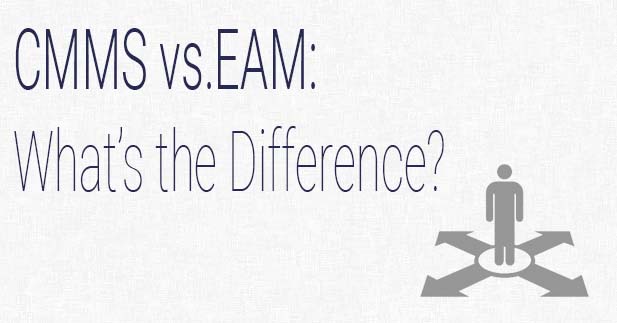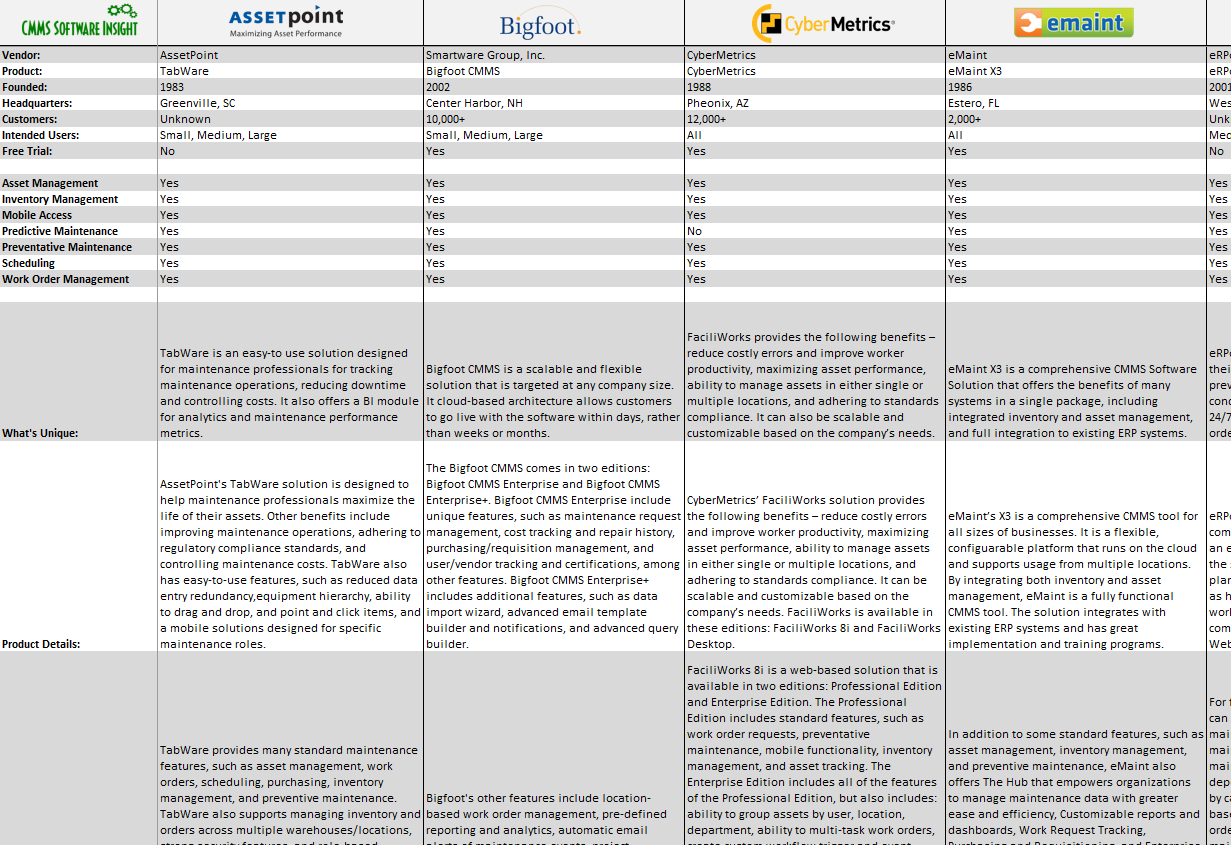Computerized Maintenance Management Systems (CMMS) and Enterprise Asset Management (EAM) software have the same purpose. So they must be the same thing, right?
Not exactly.
Both solutions have the same goals of maintaining, managing and protecting company assets by streamlining and automating maintenance management, inventory management, work order generation and scheduling. And both shift organizations from a reactive maintenance strategy to a proactive one.
But comparing CMMS and EAM is like comparing a Granny Smith apple to a Red Delicious one. Each software is unique.
What’s the Difference?
CMMS was first to arrive on the business software scene.
In the ’60s, CMMS started as a punch-card system used by large companies to monitor assets and the way they conducted maintenance. As the technology advanced over the years, so did the need to connect numerous facilities. According to strategic maintenance specialists Plant Engineering, EAM emerged to do this.
But age is only one of the differentiators between the solutions.
When it comes down to it, EAM software is a more robust version of CMMS. The CMMS Software Guide has summarized the difference by saying, “EAM is a long-term, expandable comprehensive solution that includes all CMMS functions while a CMMS system is focused on maintenance systems and operations.”
The main functions of a CMMS include:
- Automating maintenance scheduling.
- Managing company inventory and work orders.
- Maintaining an asset tracking database.
Enterprise asset management software, however, is able to work with larger sets of users from multiple sites. The system is also able to monitor all aspects of a maintenance strategy, from notification to follow-up.
In addition to the capabilities of a CMMS, EAM solutions typically involve:
- Life-cycle planning and analysis. The robust software tracks an asset’s historical maintenance records, as well as its financial records, to create better budget projections and predict replacement dates.
- Multiple maintenance method monitoring. Going beyond preventive maintenance, an EAM tracks all the metrics needed to use predictive and reliability-centered techniques. All three strategies can then be combined to determine an asset’s future state and continued reliability.
- Workflow analysis. As an all-encompassing solution, an EAM is able to track technician workflows from start to finish. This makes it easier to find and address hiccups in the overall system.
Although different in capabilities, the advancement of the modern CMMS is quickly closing the gaps between the two solutions.
Growth of the Modern CMMS
From the early 2000s on, web-based and cloud CMMS has become a growing trend within the industry. This gives the solution the ability to expand its asset-maintenance functions across an entire enterprise, allowing CMMS to stand side by side with EAM software.
CMMS vendors have also created modules to record data about an asset’s full lifecycle. This gives companies the ability to move into more predictive and reliability-centered techniques when making business decisions.
To stay competitive in the market, vendors have begun to use the terms side by side.
How to Know Which to Choose
The bottom line – EAM and CMMS are both covered by the umbrella term “Maintenance Management Software.” And the purpose of this software is to save time and money by increasing efficiency and managing company assets.
Said best by the experts at Plant Engineering, “At the end of a day, find the right product, not the right acronym.”
Entrepreneurial and small business resource Business Daily News created a list of questions to ask before deciding to invest in maintenance management software:
- What assets do we need to keep track of?
- What problems are we trying to solve?
- What features do we need?
- Can we customize the system to our needs?
- Can the system adapt to our needs as we grow?
- What training is needed?
- Do we have the time/budget to implement?

 Choosing a CMMS vendor is all about finding the right fit. Use our Vendor Comparison Guide to get an objective look at the top solutions.
Choosing a CMMS vendor is all about finding the right fit. Use our Vendor Comparison Guide to get an objective look at the top solutions.
Great article! I’m glad that I stumbled upon it because I’ve been wondering what the main differences between CMMS and EAM are. I think you’re absolutely right modern CMMS has grown substantially from the early 2000s. It always amazes me how much exponential growth in the tech industry there is. At the end of the day, though, both of these solutions save time and money for users.
Nice Article, but please don’t forget that EAM should now let connections with ERP. The keys of a good Maintenance Management Software are the ability to live with the others tools in a company and also in the ability to use the mobility.